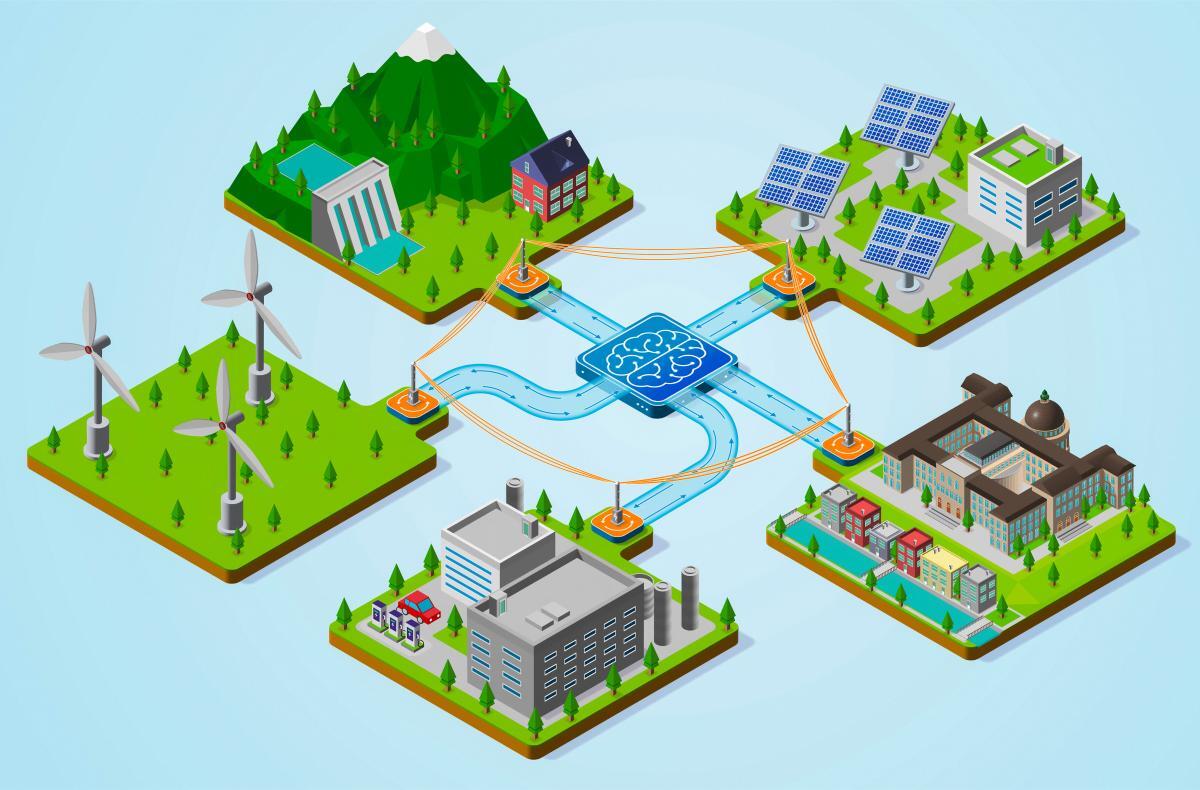
- Research
Control
Smart controls for smart grids
Automation of the energy grids aims to tackle an urgent, two-pronged problem. On the one hand, rising use of renewables means that generation is becoming increasingly volatile and decentralised. But at the same time, the electrification of key sectors is causing energy consumption to skyrocket. Without advanced control strategies, this could lead to grid instability and rising costs.
Modern control solutions enable the seamless integration of renewable energy systems, coordinating distributed energy sources and loads to ensure more reliable, efficient, sustainable and resilient networks.

What is the problem?
The variability and intermittency of renewable sources make real-time balancing of supply and demand complex, often leading to voltage fluctuations and frequency instability. As traditional synchronous generators are replaced with small-scale distributed energy resources (such as rooftop photovoltaics, wind turbines or battery storage), interfaced with power electronics, the grid loses the ability to dampen frequency deviations, making it more susceptible to instability. This more distributed grid is also characterised by bidirectional power flows, which disrupt traditional protection schemes and may cause congestion.
How do we solve it?
At Grid2050, we are looking into advanced control strategies to address these challenges spanning different levels of the energy grid.
- Challenge: As inverter-based generators, distributed energy resources (DERs) lack the stabilising rotation of large power plants – a function that helps reject disturbances, making power systems more resilient.
Solution: To support grid stability, we must equip DERs with control algorithms that replicate this behavior. Implementing synthetic inertia and fast frequency response controls will enable quick, dynamic regulation of voltage and frequency.
- Challenge: Renewable generation (which is weather-dependent) and load variability bring rising uncertainty.
Solution: Model predictive control (MPC) and other real-time optimisation techniques can effectively manage supply-demand imbalances by factoring in load and generation forecasts while adhering to system constraints.
- Challenge: A network that includes thousands of DERs (at varying voltage levels) is at greater risk of congestion and losses. These risks need to be managed, and voltage compliance ensured.
Solution: Coordination through scalable, layered, fast-reacting control architectures (comprising primary, secondary, and tertiary layers). Localised decision making and fast-reacting control loops can compartmentalise this uncertainty into manageable levels, helping balance local (peak shaving, network decongestion) with system-wide objectives.
- Challenge: To develop and test advanced control methods to manage all of the above, we need precise distribution models.
Solution: Work with the distribution system to create high-fidelity digital twins of low-voltage distribution systems.
Together, these control strategies ensure that the power system remains stable, secure, and efficient, even under the fast dynamics and structural complexities that come with the new distributed grid.